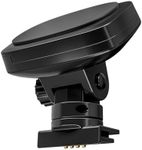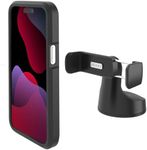Buying Guide for the Best Car Phone Holders
Choosing the right car phone holder can make your driving experience safer and more convenient. The main goal is to keep your phone secure and easily accessible without distracting you from the road. When picking a car phone holder, it's important to consider where and how you want to mount it, how stable it is, and whether it fits your phone and car interior. Understanding the key features will help you find a holder that matches your needs and driving habits.Mounting LocationMounting location refers to where the holder attaches in your car, such as the dashboard, windshield, air vent, or CD slot. This is important because it affects your line of sight, ease of access, and how much space it takes up. Dashboard and windshield mounts are usually more visible and accessible, but may block your view if not positioned carefully. Vent mounts are less intrusive but may not fit all vent types and can be affected by airflow. CD slot mounts are a good option if you don't use your CD player. To pick the right one, think about your car's layout and which spot allows you to see your phone easily without taking your eyes off the road.
Attachment MechanismThe attachment mechanism is how the holder grips your phone, such as clamps, magnets, or cradles. This matters because it determines how secure your phone will be, how easy it is to insert or remove, and whether it works with your phone case. Clamps offer a strong grip and are adjustable for different phone sizes, but may require two hands to operate. Magnetic holders are quick and easy, but you need to attach a metal plate to your phone or case. Cradles can be more stable for larger phones. Choose the mechanism that matches your phone size, how often you need to remove your phone, and whether you mind adding a metal plate.
AdjustabilityAdjustability refers to how much you can move or rotate the holder to get the best viewing angle. This is important for comfort and safety, as you want to glance at your phone without straining or moving your head too much. Some holders offer 360-degree rotation, tilt, or extendable arms. If you use navigation or take calls often, look for a holder with flexible adjustment so you can position your phone exactly where you need it.
Phone CompatibilityPhone compatibility means whether the holder fits your phone's size and shape, including with a case on. This is crucial because a poor fit can lead to your phone falling out or not fitting at all. Holders usually list the range of phone sizes they support. If you have a larger phone or use a thick case, make sure the holder can accommodate it. If you change phones often, a more universal holder is a better choice.
Stability and Vibration ResistanceStability and vibration resistance describe how well the holder keeps your phone steady, especially on bumpy roads. This is important to prevent your phone from shaking, falling, or making it hard to read the screen. Some holders have extra padding or shock-absorbing features. If you drive on rough roads or want to use your phone for navigation, look for a holder known for its stability.
Ease of Installation and RemovalEase of installation and removal refers to how simple it is to set up or take down the holder. This matters if you switch cars, share your car, or don't want a permanent fixture. Some holders use suction cups or clips that are easy to move, while others require more effort. If you value flexibility or plan to use the holder in multiple vehicles, choose one that's quick and easy to install and remove.
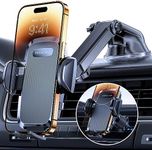
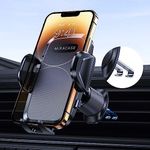
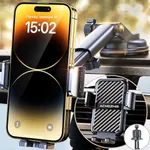
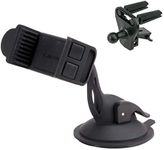
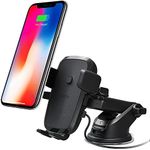
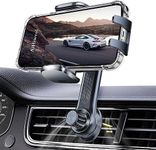
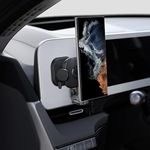




![[Holder Expert] Miracase Military-G](https://images-proxy.bestreviews.guide/TN8WoDBo8vls1GUTKIvlw6m2B78=/0x150/https://m.media-amazon.com/images/I/41xHrNjoicL._AC_CX679_.jpg)
